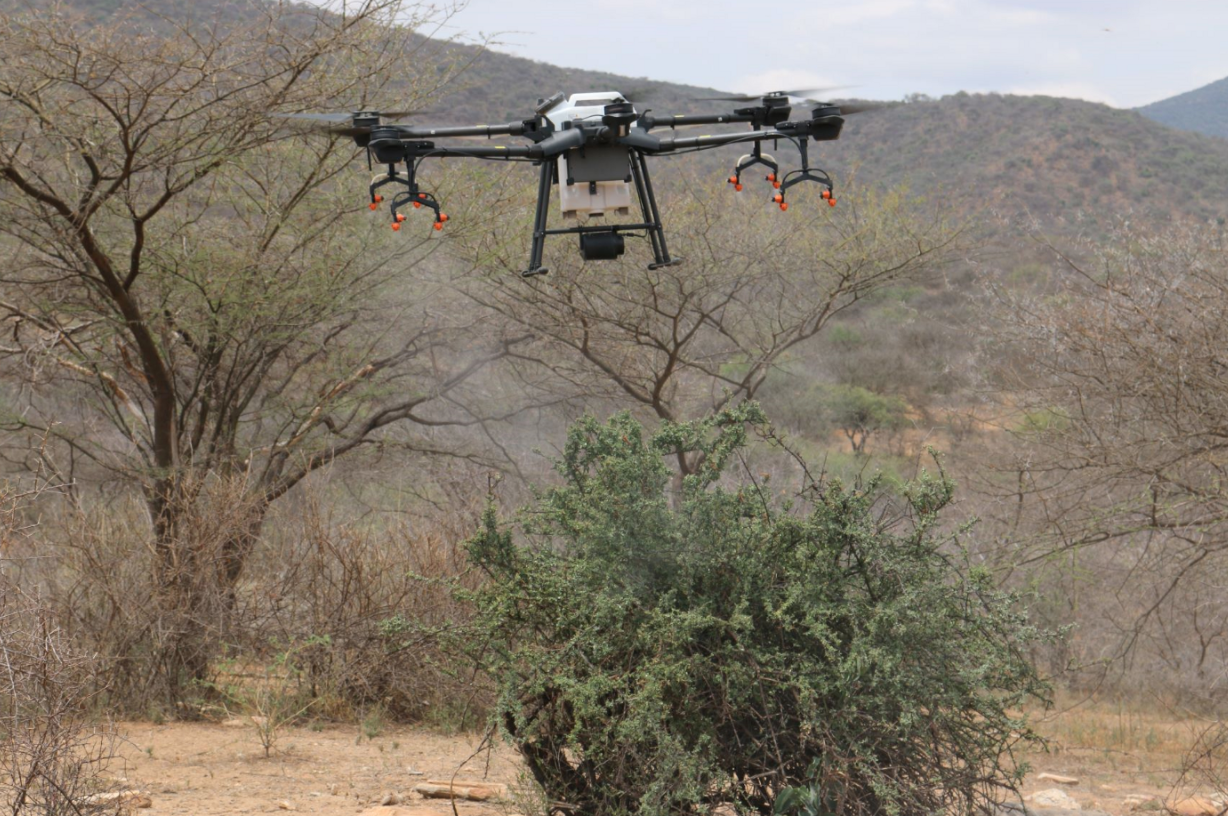Piloting the effectiveness of drones in tackling Desert locusts in East Africa
THE QUESTION
Can using drones as a complementary technology be successful in tackling desert locust invasions in East Africa?
LOCATION: Kenya
SECTOR: Agriculture
TECH: UAVs
TIMELINE: June 2020 - March 2022
PIONEER: Tristan Eagling
PARTNER: Astral Aerial Solutions & CABI
The Challenge
An unprecedented desert locust invasion plagued East Africa from 2019 to 2021, with an estimated 20.2 million people facing severe acute food insecurity as a result in Ethiopia, Kenya, Somalia, South Sudan, Uganda and Tanzania. It was the worst invasion Kenya had experienced in 70 years. If locust swarms aren’t dealt with in a timely manner, the crop-devouring locusts can grow 500 times larger in a few months–which can devastate rural livelihoods. Contemporary control strategies use aerial and ground spraying of insecticide, but these methods are expensive and impose damage onto the land. Without intervention, these plagues can last years before a natural die-off occurs.
The Idea
This pilot implemented drones to bypass the traditional challenges of contemporary locust control strategies. These drones act more precisely than the traditional control methods and are more effective when combined with aerial spraying. Additionally, the drones were used at dawn as locusts are easier to target at this time. This intervention utilised minimal personnel compared to traditional methods and incorporated swarm intelligence to allow for multiple drones to operate at the same time. Overall, drones present an opportunity to maximise effectiveness, value for money and amount of area covered by a cohesive package of control measures.
What we learned
Thorough operations planning was essential, given the scale of the operation. Operations planning was essential from the initial field development to the larger deployment to have contingency plans.
Coordinating with other response teams was invaluable as they provided guidance on desert locust tracking.
Building valuable partnerships, such as the one with CABI, ensured that the pilot’s efforts were complimented by sound scientific methods and insights.
It would have been far easier if the ULV, Ultra Low Volume spraying, system had been available turnkey from the manufacturer. We had to spend a lot of time to ensure that it worked correctly.
Fly carefully — the increased width of the drone due to the long boom holding the ULV nozzles made the drone slightly less maneuverable in tight spaces, especially when taking off and landing.
All photos on this page were taken by the pilot’s implementing partners, Astral Aerial Solutions and CABI. What happened next?
The pilot has closed down and the next stage is to share learnings with the UN FAO Drones Working Group and to publish the papers that have resulted from the work.
Read more
Read the Pilot’s Story
Read the pilot’s research report - “Optimum Flight Height for the Control of Desert Locusts Using Unmanned Aerial Vehicles (UAV)”
Explore the pilot’s Readymag story, which describes the pilot and the team’s journey — “Drones Vs. Locust”
Learn about the pilot’s objectives — “Pilot project using drones to control desert locust launches in Kenya”
Learn more about the impact locust swarms have on rural communities — “Deploying drones to tackle desert locust swarms in East Africa”
Read about the challenges the pilot team faced and lessons learned — “Drones in Locust Control — putting theory into action”
Read about the pilot’s detour — “New Advances in Drone Desert Locust Control — (ULV)”
Read a post from Julie Makena, an Engineer and Safety Officer at Astral Aerial Solutions, on why innovation is wanted by communities to solve problems — “A new perspective on why innovation is wanted more often than needed”
Learn about Violet Ochieng, whose research as a MSc student at the University of Nairobi acted as the basis for the pilot, and her experiences at the 24th Scientific Conference of the International African Association of Insect Scientists — “Carol Ellison Science Award winner highlights locust research at her first international scientific conference”
Read about Violet Ochieng’s exhibition at Nairobi Innovation Week — “Exhibition of the DroneSight for Desert Locusts Management during Nairobi Innovation Week at the University of Nairobi”
Explore the pilot’s key lessons - “Key lessons from our pilot testing the effectiveness of drones for controlling locust swarms in Kenya”










